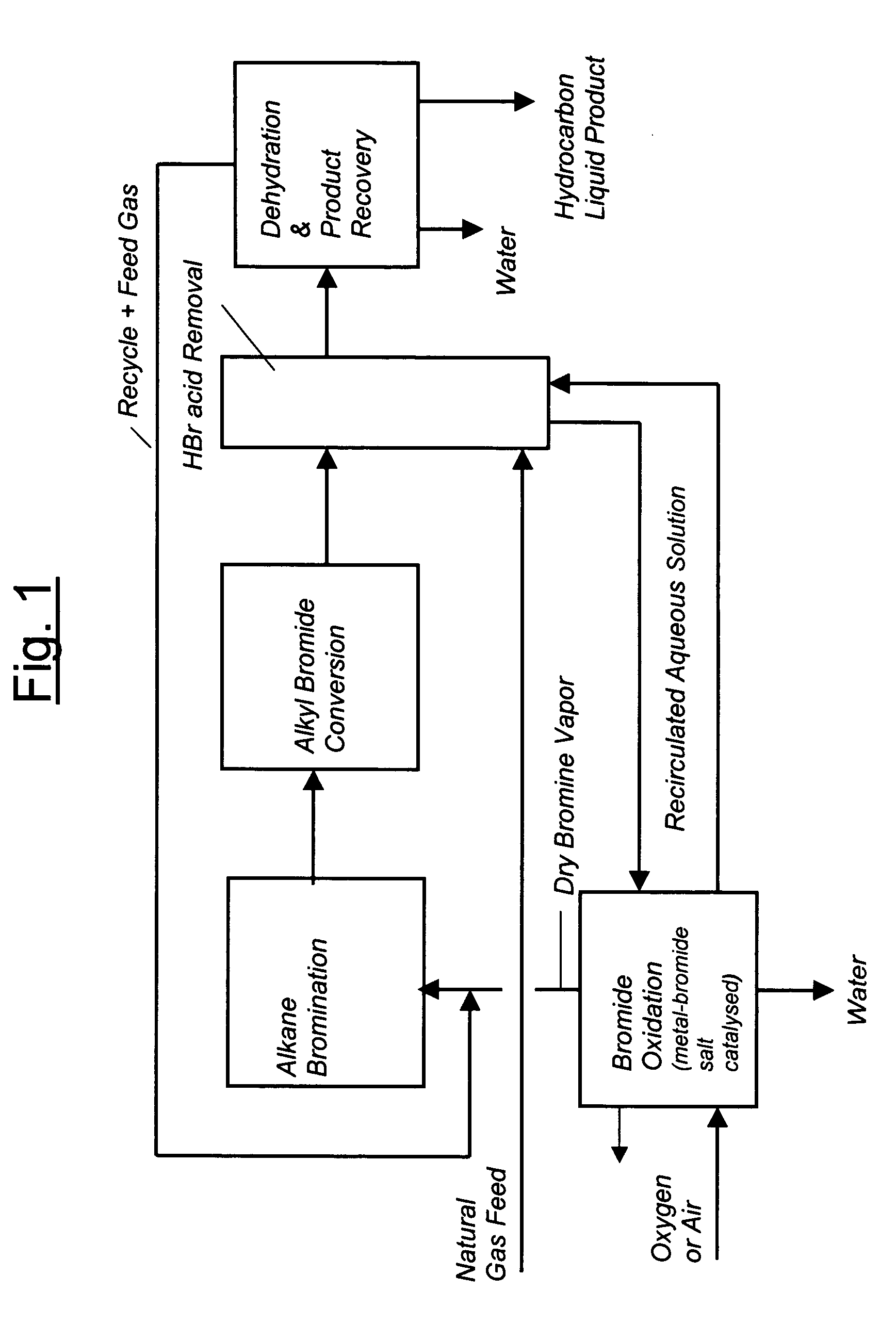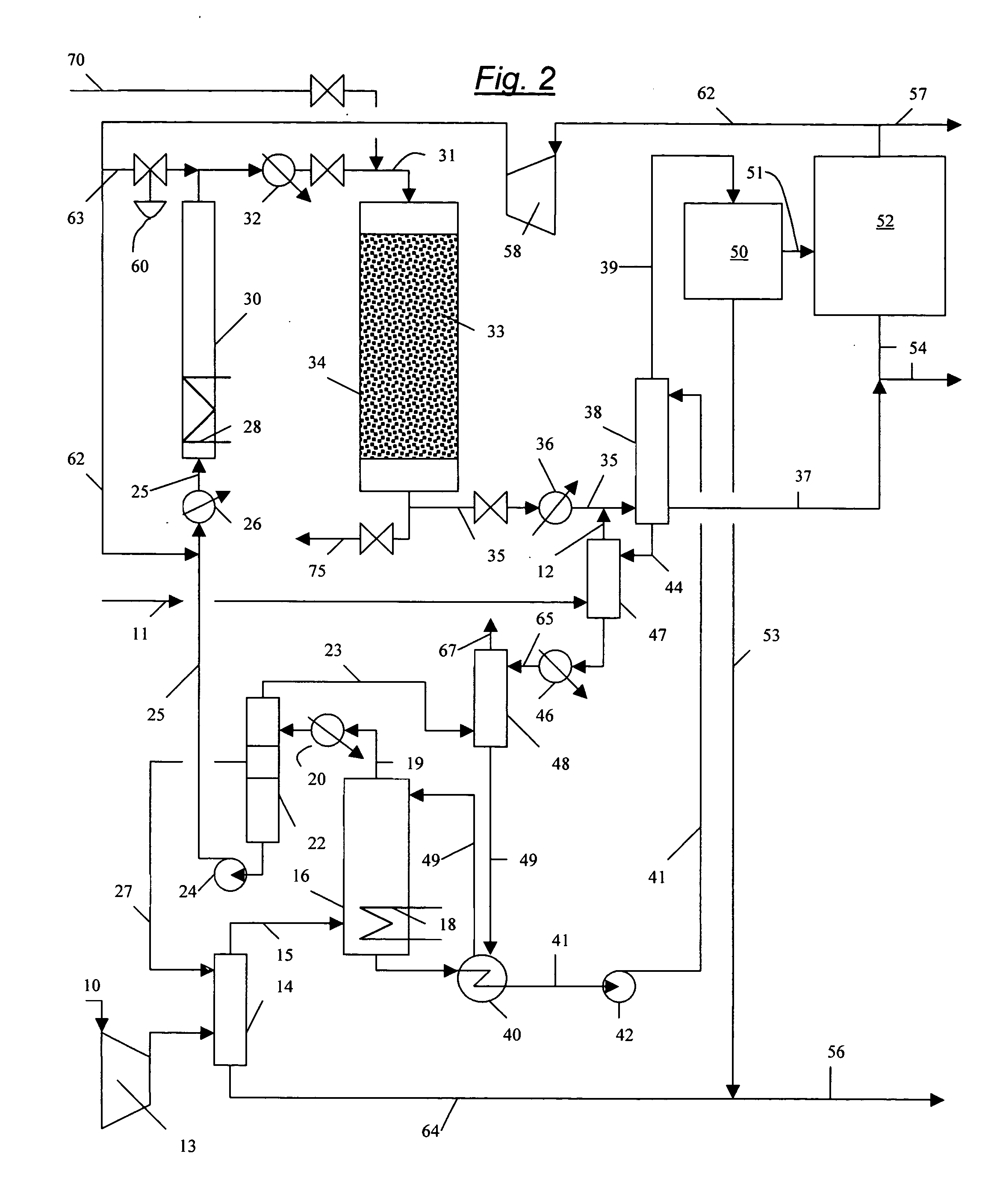Process for converting gaseous alkanes to liquid hydrocarbons
a technology of liquid hydrocarbons and alkanes, which is applied in the direction of hydrocarbon preparation catalysts, bromine, halogenated hydrocarbon preparations, etc., can solve the problems of high cost of gaseous transportation of natural gas in gaseous form by pipeline or compressed gas in vessels, practical and economic limitations exist to the distance over which natural gas may be transported in gaseous form, and high cost of the lng process
- Summary
- Abstract
- Description
- Claims
- Application Information
AI Technical Summary
Benefits of technology
Problems solved by technology
Method used
Image
Examples
example 1
[0045] Various mixtures of dry bromine and methane are reacted homogeneously at temperatures in the range of 459° C. to 491° C. at a Gas Hourly Space Velocity (GHSV which is defined as the gas flow rate in standard liters per hour divided by the gross reactor catalyst-bed volume, including catalyst-bed porosity, in liters) of approximately 7200 hr−1. The results of this example indicate that for molar ratios of methane to bromine greater than 4.5:1 selectivity to methyl bromide is in the range of 90 to 95%, with near-complete conversion of bromine.
example 2
[0046]FIG. 7 and FIG. 8 illustrate two exemplary PONA analyses of two C6+ liquid product samples that are recovered during two test runs with methyl bromide and methane reacting over ZSM-5 zeolite catalyst. These analyses show the substantially aromatic content of the C6+ fractions produced.
example 3
[0047] Methyl bromide is reacted over a ZSM-5 zeolite catalyst at a Gas Hourly Space Velocity (GHSV) of approximately 94 hr−1 over a range of temperatures from about 100° C. to about 460° C. at approximately 2 bar pressure. As illustrated in FIG. 4, which is a graph of methyl bromide conversion and product selectivity for the oligimerization reaction as a function of temperature, methyl bromide conversion increases rapidly in the range of about 200° C. to about 350° C. Lower temperatures in the range of about 100° C. to about 250° C. favor selectivity towards higher molecular weight products however conversion is low. Higher temperatures in the range of about 250° C. to about 350° C. show higher conversions in the range of 50% to near 100%, however increasing selectivity to lower molecular weight products, in particular undesirable methane is observed. At higher temperatures above 350° C. selectivity to methane rapidly increases. At about 450° C., almost complete conversion to metha...
PUM
| Property | Measurement | Unit |
|---|---|---|
| temperature | aaaaa | aaaaa |
| temperature | aaaaa | aaaaa |
| temperatures | aaaaa | aaaaa |
Abstract
Description
Claims
Application Information
 Login to View More
Login to View More - R&D
- Intellectual Property
- Life Sciences
- Materials
- Tech Scout
- Unparalleled Data Quality
- Higher Quality Content
- 60% Fewer Hallucinations
Browse by: Latest US Patents, China's latest patents, Technical Efficacy Thesaurus, Application Domain, Technology Topic, Popular Technical Reports.
© 2025 PatSnap. All rights reserved.Legal|Privacy policy|Modern Slavery Act Transparency Statement|Sitemap|About US| Contact US: help@patsnap.com



